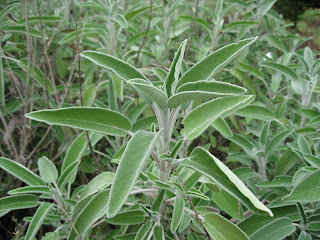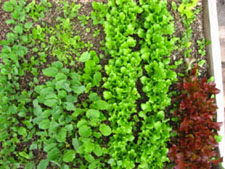There are many beneficial insects that visit your garden, often feeding on pest species such as aphids, caterpillars and thrips. One of these beneficial insects are very important as they can help by pollinating your plants too. Say hello to the bee.
If you take a close look around your garden you will notice many different varieties of bee; small black ones, green ones, striped and fuzzy ones. There are over 250 species of bee in Britain. They are responsible tor pollinating a large number of fruits, flowers and vegetables. Bees play a very important role are a key part of our ecosystem.
 By creating a habitat within your garden that is appealing to bees you will increase pollination and decrease pests. It is easy to attract bees into your garden if you have plenty of flowering plants. Bees feed on these plants looking for sugary nectar, which gives them energy; and pollen which provides them with proteins and fats.
By creating a habitat within your garden that is appealing to bees you will increase pollination and decrease pests. It is easy to attract bees into your garden if you have plenty of flowering plants. Bees feed on these plants looking for sugary nectar, which gives them energy; and pollen which provides them with proteins and fats.
They differ in the length of their tongue, and therefore there is a difference in the type of flower they visit for food.
A range of flower shapes in your garden you will appeal to a wide variety of bees. Bumble beesBombus hortorum) have very long tongues and feed from plants with long corollas such as foxgloves and red campion. Some bees have learnt to access nectar from unsuitable plants such as Bombus terrestris, which pierce plants which have a long corolla and takes the nectar from the side of the flower.
Planting a wide range of bee friendly plants in your garden that flower successively over a long period you will encourage more bees into your garden and support bees that fly at different times over the season. Some plants will be more appealing to bees than others. Native wild flowers provide the best source of pollen and nectar for our native bees, and are four times more attractive to bees than exotic plants. These native plants are better adapted to our climate and growing conditions and need minimal attention.
Avoid plants that have been intensively bred as they contain little nectar or may be difficult for bees to access. Bees have excellent colour vision to aid them to locate flowers and are particularly attracted to blue, purple, violet, white and yellow plants. Scented plants are also attractive to bees, such as herbs and evening scented plants.
Bees are more attracted to plants planted in groups, rather than individually. In addition to planting attractive plants, you can improve numbers of bees by not using pesticides in your garden as pesticide use can kill off beneficial bugs as well as pests.
The following plants are particularly appealing to bees:
Allium schoenoprasm (Chives)
Althaea rosea (Hollyhock)
Aquilegia (Columbine)
Aster (Aster)
Aubrieta deltoida (Aubrietia)
Berberis (Oregon grape)
Borago officinalis (Borage)
Cotoneaster horizontalis (Cotoneaster)
Chrysothamnus (Rabbit-brush)
Ceanothus (Wild lilac)
Daphne mezereum (Daphne)
Digitalis (foxglove)
Echinops ritro (Globe thistle)  Echinacea (Purple cone flower)
Eriogonum (Wild buckwheat)
Foeniculum vulgare (Fennel)
Helianthus (Sunflower)
Hyssopus officinalis (Hyssop)
Knautia arvensis (Scabious)
Kallstroemia (Caltrop)
Larrea (Creosote bush)
Lavendula spica (Lavender)
Lupinus (Lupin)
Melissa officinalis (Lemon balm)
Oenothera biennis (Evening primrose)
Origanum vulgare (Marjoram)
Papaver (Poppy)
Phacelia tanacetifolia (Californian bluebell)
Penstemon (Penstemon)
Reseda odorata (Common mignonette)
Echinacea (Purple cone flower)
Eriogonum (Wild buckwheat)
Foeniculum vulgare (Fennel)
Helianthus (Sunflower)
Hyssopus officinalis (Hyssop)
Knautia arvensis (Scabious)
Kallstroemia (Caltrop)
Larrea (Creosote bush)
Lavendula spica (Lavender)
Lupinus (Lupin)
Melissa officinalis (Lemon balm)
Oenothera biennis (Evening primrose)
Origanum vulgare (Marjoram)
Papaver (Poppy)
Phacelia tanacetifolia (Californian bluebell)
Penstemon (Penstemon)
Reseda odorata (Common mignonette)  Rhododendron (Rhododendron)
Rhododendron (Rhododendron)
Ribes (currant)
Rosmarinus officinalis (Rosemary)
Rudbeckia (Black eyed Susan)
Salvia officinalis (Sage)
Salix (willow)
Sambucus (Elder)
Sedum (Stonecrop)
Solidago (Goldenrod)
Symphytum grandiflorum (Comfrey)
Symphoricarpos (Snow Berry)
Thymus vulgaris (thyme)
Vaccinium (huckleberry)
Veronica spicata (Speedwell)
Wisteria (Wisteria)
For related articles click onto:
Ladybirds
Ladybird facts
Keystone species
Moth Facts
What is the difference between a butterfly and a moth?
What is the difference between a wasp and a hornet?
 Compound fertilisers contain Nitrogen, Phosphorus and Potassium (NPK). The quantity of each nutrient can vary and is stated in the NPK ratio on the package. Fertilisers can come in liquid, granular or powder form which can be applied with appropriate applicator.
Compound fertilisers contain Nitrogen, Phosphorus and Potassium (NPK). The quantity of each nutrient can vary and is stated in the NPK ratio on the package. Fertilisers can come in liquid, granular or powder form which can be applied with appropriate applicator.































